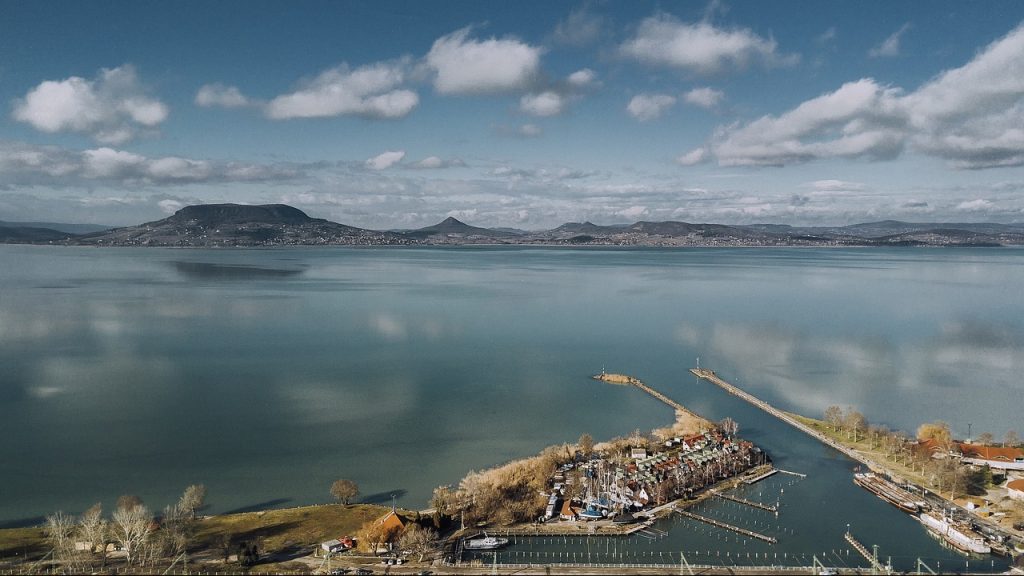Construction will be prohibited on a larger area than before, and the new regulations will also protect beaches and green areas.
Lake Balaton is one of our most important natural heritages, which we have a duty to protect, said Regő Lánszki, national chief architect and state secretary for architecture, in a statement sent to MTI by the Ministry of Construction and Transportation (ÉKM).
According to the information, based on the new construction framework drawn up by the State Secretariat for Architecture of the Ministry of Education and Culture - in accordance with the law on Hungarian architecture adopted at the end of last year - construction will be prohibited in a larger area than before. In addition, the new regulations will protect beaches and green areas and promote natural coastal areas by designating maintaining the ecological condition of areas covered with natural and near-natural vegetation.
The State Secretariat is waiting for opinions on the plan from municipalities, professional and civil organizations until August 31 at the email address vizpartiterv@ekm.gov.hu
- they wrote in the statement.
August is the month of the Balaton, so on August 1st, the ÉKM started the preliminary professional consultation of the draft government decree on land use requirements for the waterfront areas of Balaton aimed at reviewing the waterfront rehabilitation study plans, as well as the attached Waterfront Plan. You have one month to comment.
The submitting Ministry of Construction and Transport accepts comments at vizpartiterv@ekm.gov.hu
- reads the statement.
It was announced that the draft of the Waterfront Plan is available at https://www.e-epites.hu/hirek/jelentos-szigoritasok-balatoni-vizparti-tervben-kezdodik-szakmai-egyeztetes.
It was emphasized that the aim of the new draft government decree (BATÉK) is to:
• renew the construction regulations for the waterfront areas of Balaton,
• create a clear and transparent system of spatial planning – waterfront Plan – settlement planning – construction regulations,
• reduce the development of waterfront areas,
• promote more effective protection of natural and near-natural areas,
• prevents ecological degradation,
• strengthen and encourage the public use of waterfront areas, the preservation of landscape features,
• create the legal conditions for new land use adapted to water level regulation.
They added that all of this is in line with the law on Hungarian architecture adopted at the end of last year, which also took significant steps to preserve the Balaton environment.
In recent decades, the problem of construction around Lake Balaton and the disappearance of the natural environment has caused a significant anomaly.
All this could also have happened because the regulation was outdated
they added.
It was explained that this regulation is being modernized now, the first step of this process was the new architectural law, and now the Waterfront Plan has been completed, which reviews the waterfront rehabilitation study plans that have been exceeded for almost 20 years.
The following made the change urgent and necessary:
• changes in socio-economic needs,
• renovation and apartment building construction fever as an effect of the epidemic,
• the need to designate new holiday and residential areas,
• termination of campsites,
• development intention to build large-ship ports,
• prioritizing fishing needs instead of fishing,
• changes in territorial and settlement regulations,
• modification of the regulatory water level,
• natural changes (decrease in the quantity and quality of reed beds).
They pointed out that even the current draft of the Waterfront Plan is based on broad sectoral and local government consultation. The professional soundness of the Waterfront Plan is ensured by extensive sectoral consultations with the involvement of the state administration bodies for nature conservation, water affairs and shipping.
It was emphasized that the Waterfront Plan contains many strictures, its purpose is not just a simple regulation, but a Balaton protection plan, which helps to preserve the unique, special natural, built and cultural environment of Balaton.
Among the strictures of the Waterfront Plan, it was highlighted that by expanding the territorial scope of the Waterfront Plan, the regulation protects an even larger coastal area against construction (areas intended for new construction, designation of new residential and economic areas, and the increase of construction parameters).
The recording of port locations in the Waterfront Plan makes undesirable developments impossible: a port can only be established where the Waterfront Plan indicates this.
The Waterfront Plan protects green areas and beaches:
as a general rule, there is no green area designated in the Waterfront Plan, and the beach can only be reclassified into a green area zone. Public Balaton beaches cannot be alienated to private owners.
The strip of coastal land to be preserved without development protects the immediate waterfront against development (the placement of buildings, swimming pools, and other structures prohibited by local building regulations).
By designating natural coastal sections, the Waterfront Plan promotes the maintenance and rehabilitation of the ecological condition of areas covered with natural and near-natural vegetation, and protects reeds on dry land.
Featured Image: Pixabay













